iOS vs Android app testing - What's the difference?
Did you know that, according to Statista, iOS and Android made up 99.3% of mobile operating systems worldwide in the fourth quarter of 2023? From social media to online shopping, mobile apps have transformed our habits and behaviors in many ways. As such, ensuring the quality and reliability of mobile apps has become a crucial task for developers, and this is why effective app testing is a step you shouldn’t skip! However, there are quite a few things to consider regarding Android vs iOS. So, to understand the issue better – let’s explore the difference between iOS and Android app testing. Let’s begin!
We can help you drive iOS and Android testing as a key initiative aligned to your business goals
Differences between iOS and Android app testing
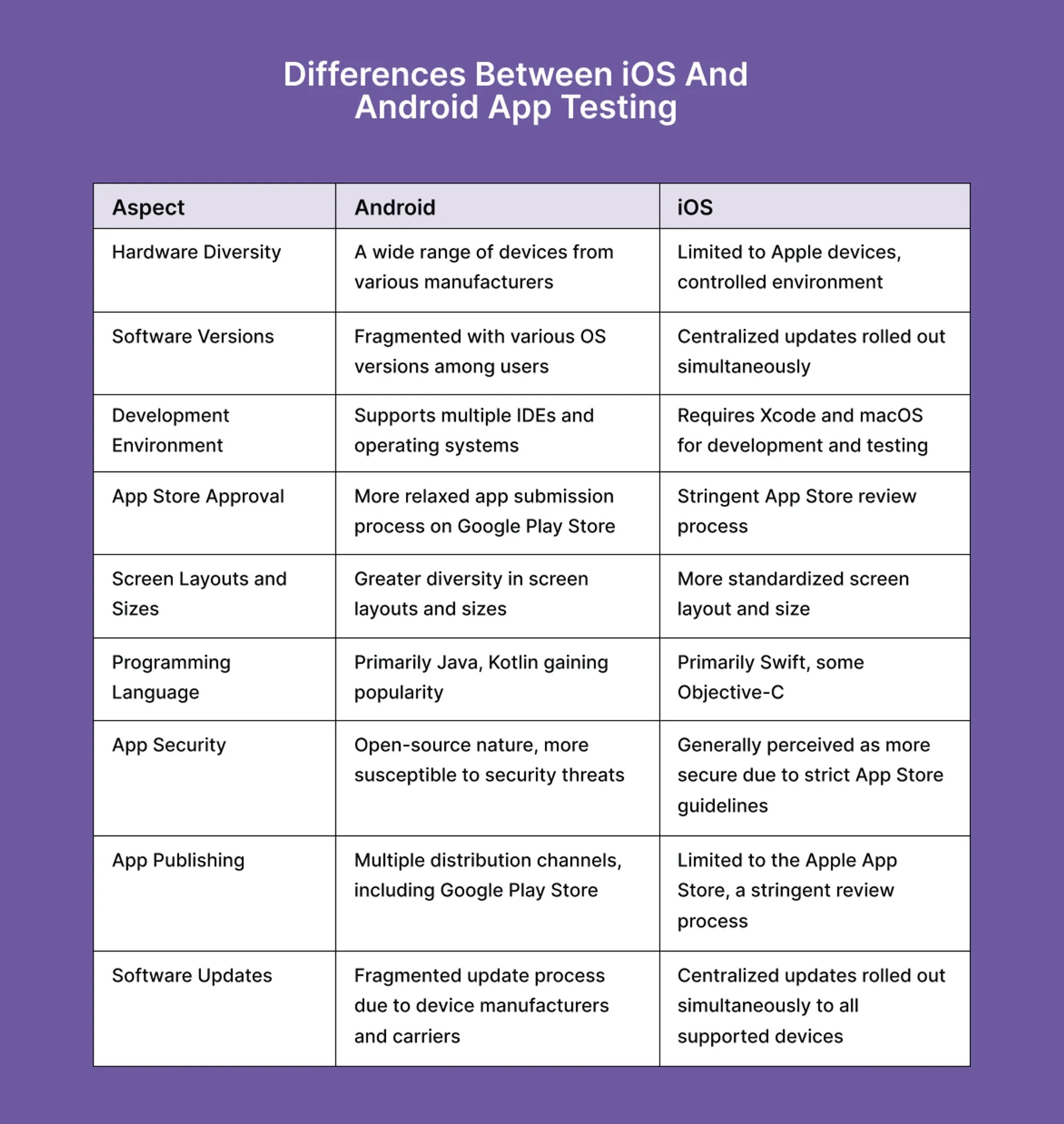
Platform ecosystem
Key differences:
- iOS testing is primarily conducted on Apple devices, offering a controlled environment.
- Android testing involves a diverse range of devices, leading to greater complexity.
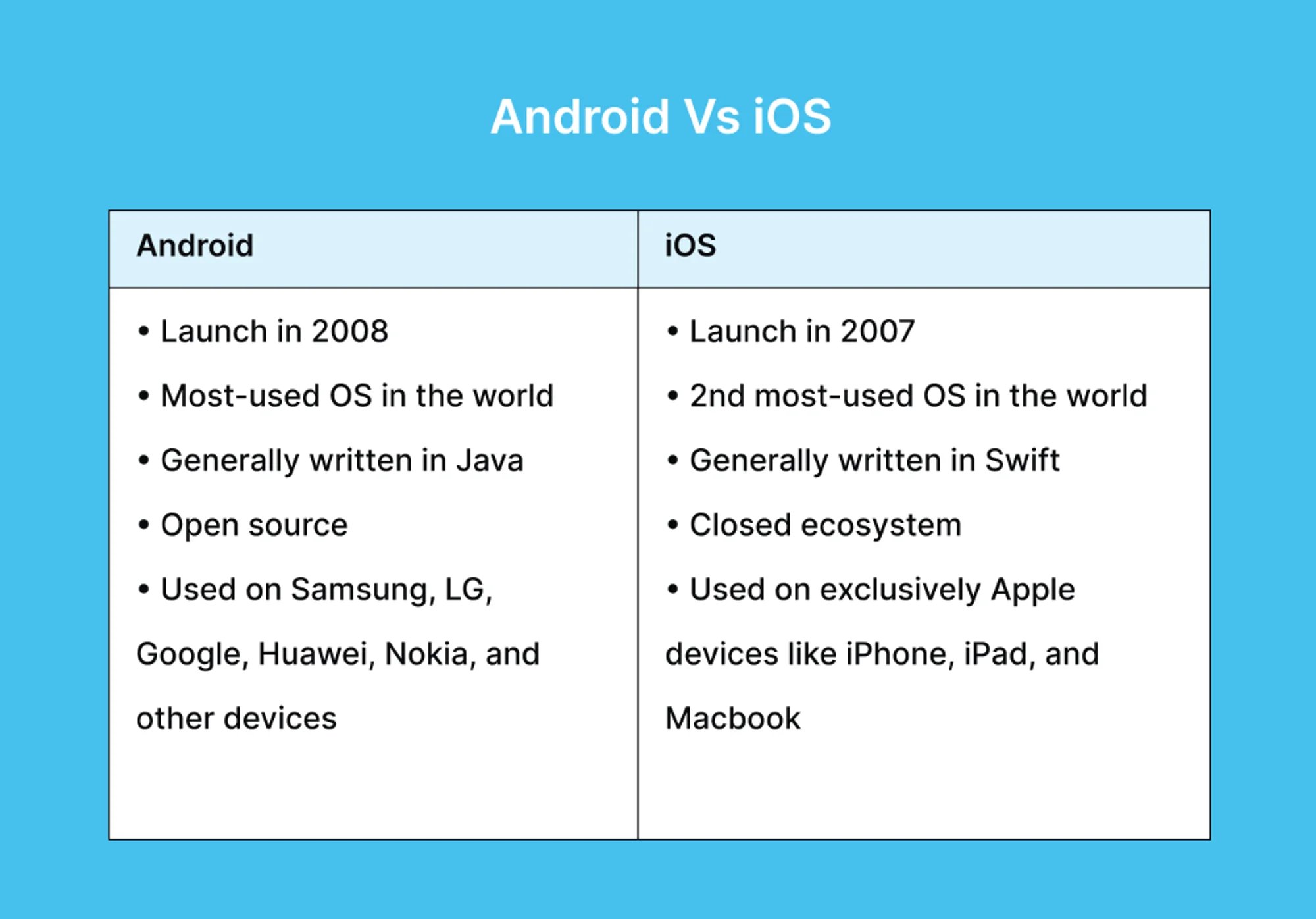
With iOS, app testing is limited to Apple devices. This means app developers have a more controlled environment to test and ensure their app works smoothly on all supported devices.
On the other hand, Android app testing involves a wider range of devices from various manufacturers. This can present a challenge for developers as there are often differences in hardware specifications, screen sizes, and software versions that can affect app performance.
Fragmentation
Key differences:
- iOS typically has a lower level of fragmentation due to a more controlled ecosystem.
- Android experiences higher fragmentation with various versions of the same operating system (OS) among different users.
Fragmentation poses a significant challenge in mobile app testing, particularly for developers working with Android. Unlike iOS, which typically maintains a more uniform user base with a lower level of fragmentation, Android users often run different versions of the operating system across a multitude of devices. This variation in OS versions can lead to compatibility issues and inconsistencies in app performance. Developers must carefully consider this fragmentation during testing, ensuring their apps function seamlessly across different Android versions to provide a consistent user experience.
Screen layouts and screen sizes
Key differences:
- iOS offers a more standardized screen layout and size across devices.
- Android presents greater diversity in screen layouts and sizes due to the multitude of device manufacturers.
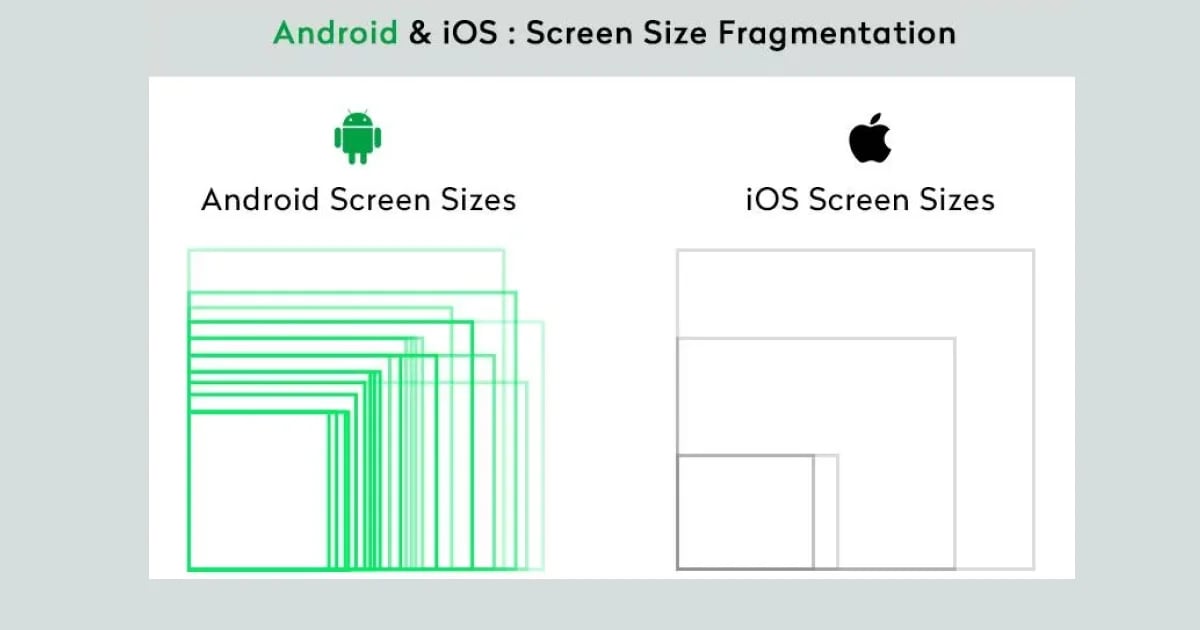
iOS provides a more standardized experience with consistent screen layouts and sizes across devices like iPhones, iPads, and Macs. In contrast, Android presents a greater diversity in screen layouts and sizes due to the wide range of device manufacturers and models. This diversity poses a challenge for developers as they must ensure their apps adapt seamlessly to various screen sizes and resolutions. Through comprehensive testing practices, developers can address these differences, ensuring their apps deliver an optimal user experience regardless of the device's screen layout or size.
Development environment
Key differences:
- iOS development requires Xcode and macOS for development and testing.
- Android development supports multiple Integrated Development Environments (IDEs), such as Android Studio and Eclipse, and it is compatible with various operating systems.
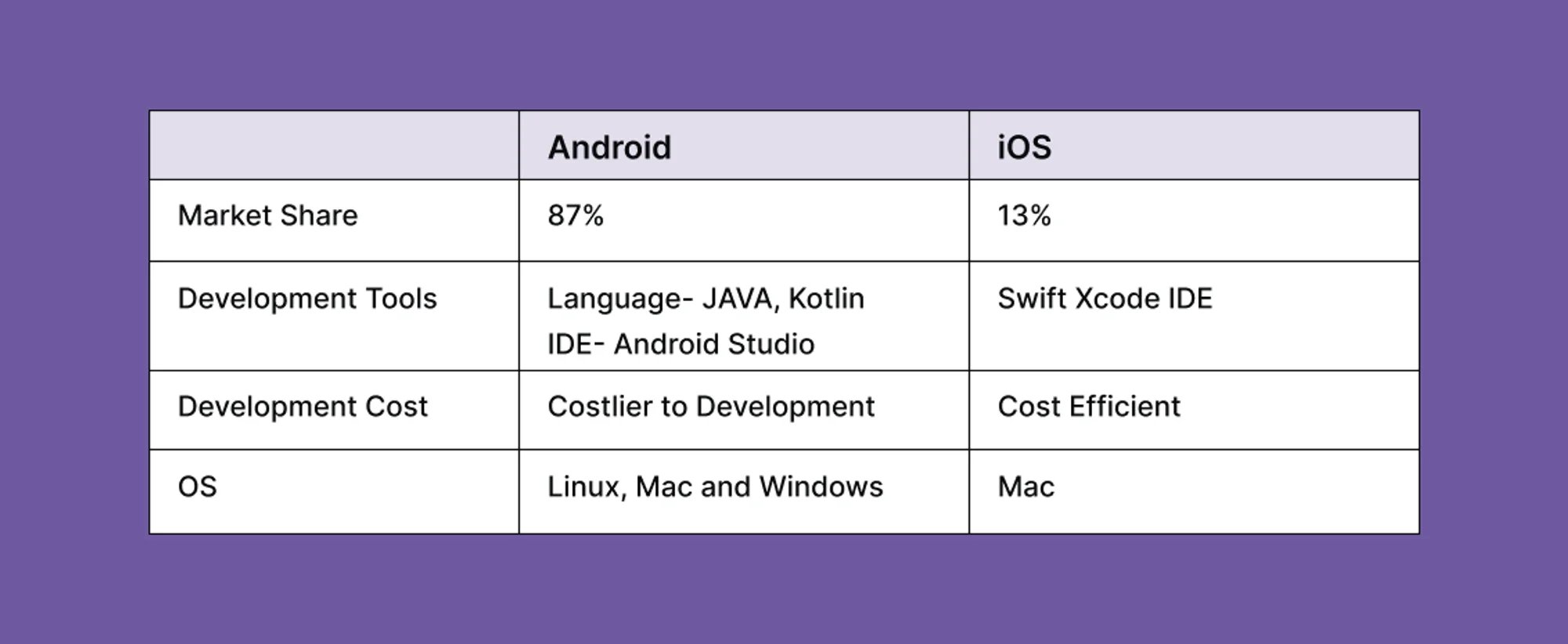
iOS development primarily relies on Xcode and macOS, requiring developers to work within the Apple ecosystem for development and testing purposes. In contrast, Android development offers more flexibility, supporting multiple Integrated Development Environments (IDEs) such as Android Studio and Eclipse. Additionally, Android development is compatible with various operating systems, allowing developers to work across different platforms. This difference in development environments provides developers with varying options and requirements based on the platform they are targeting.
App store approval
Key differences:
- iOS undergoes a stringent App Store review process.
- Android features a more relaxed app submission process on the Google Play Store.

iOS apps are subject to a rigorous review process by Apple's App Store team, which ensures that they meet stringent guidelines for quality, security, and content. In contrast, the app submission process for Android apps on the Google Play Store tends to be more relaxed, with fewer restrictions and quicker app approval turnaround time. This distinction provides developers with varying experiences and requirements when releasing their apps on iOS and Android platforms. Despite these differences, both platforms prioritize providing users with safe and high-quality app experiences.
Programming language
Key differences:
- iOS development primarily utilizes Swift, with some use of Objective-C.
- Android development primarily relies on Java, with Kotlin gaining popularity as an alternative language.
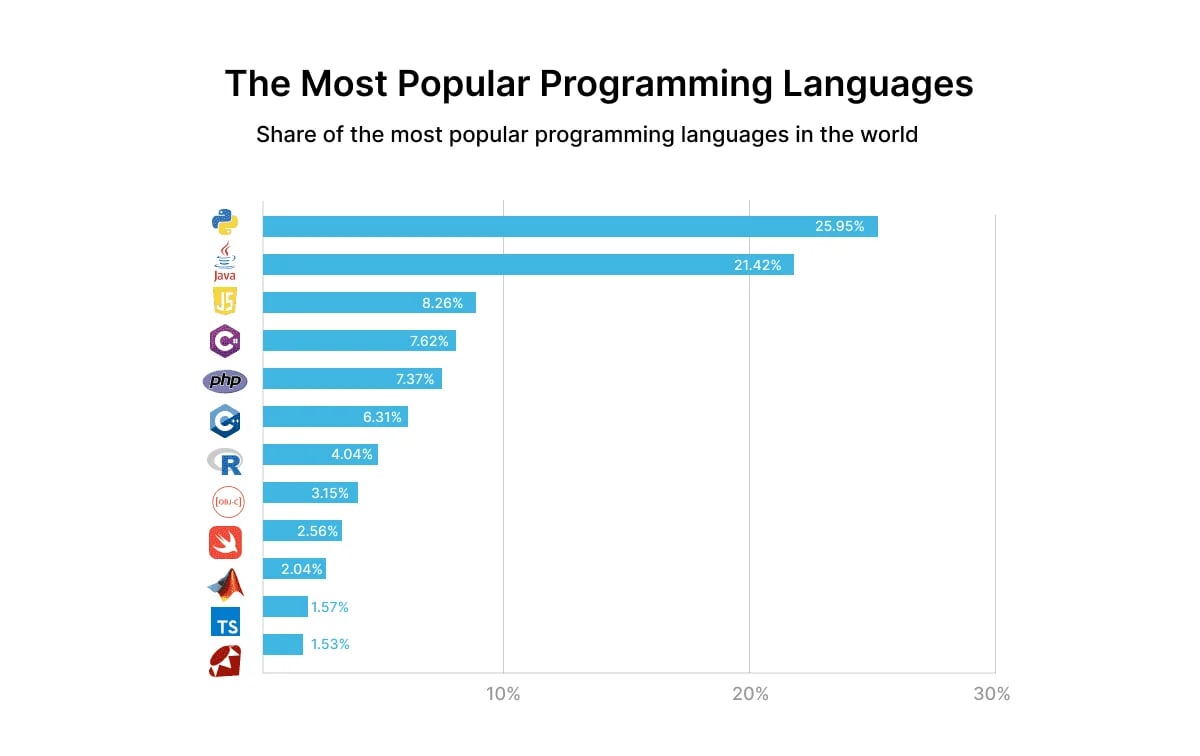
iOS development predominantly employs Swift as the primary programming language, with some legacy use of Objective-C. In contrast, Android development primarily relies on Java, which has been the traditional language for Android app development. However, Kotlin, a modern and more concise language, has been gaining popularity among Android developers due to its compatibility with Java and enhanced features.
App security
Key differences:
- iOS is generally perceived as more secure due to its strict App Store guidelines and closed ecosystem.
- Android's open-source nature can make it more susceptible to security threats.
iOS is often regarded as more secure due to Apple's stringent App Store guidelines and the closed nature of its ecosystem. Apps undergo rigorous review processes before being published on the App Store, reducing the likelihood of malicious software infiltrating the platform. In contrast, Android's open-source nature and the decentralized distribution model of the Google Play Store can make it more susceptible to security threats. While Google implements security measures, such as Play Protect, to safeguard against malicious apps, the diversity of devices and the ability to sideload apps outside the Play Store pose potential risks.
App publishing
Key differences:
- iOS app publishing is limited to the Apple App Store, subject to a stringent review process.
- Android offers multiple distribution channels, including the Google Play Store and third-party stores.
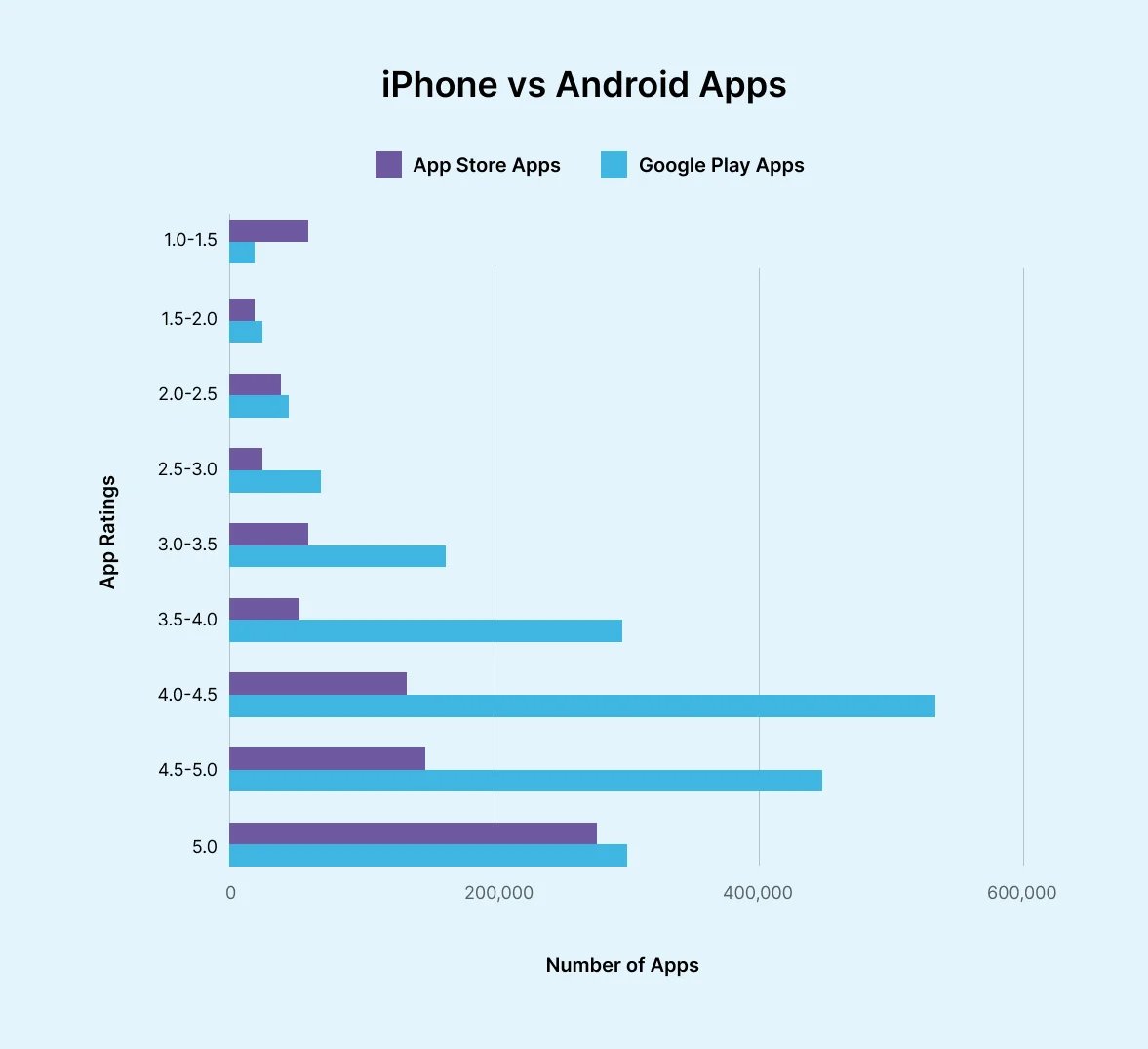
iOS app publishing is restricted to the Apple App Store, where apps undergo a thorough review process by Apple's App Review team before being made available to users. This stringent review process aims to maintain high-quality standards and ensure app security and user privacy.
In contrast, Android offers multiple distribution channels, including the official Google Play Store and various third-party app stores. While the Google Play Store imposes certain guidelines and security measures for app submissions, developers have greater flexibility to distribute apps through alternative channels.
Software updates
Key differences:
- iOS software updates are centrally managed and rolled out to all supported devices simultaneously.
- Android experiences a fragmented update process due to variations in device manufacturers and carriers.
iOS software updates are centrally managed by Apple, allowing updates to be rolled out simultaneously to all supported devices. This centralized approach ensures that users receive the latest features, security patches, and bug fixes promptly, regardless of their device model or carrier.
In contrast, the Android update process is fragmented due to the diverse ecosystem of device manufacturers and carriers. These companies are responsible for adapting and distributing Android updates to their respective devices, leading to delays and inconsistencies in update availability.
The difference between iOS and Android testing tools
Besides differences in testing iOS and Android apps, there are differences in the tools needed to test applications on those operating systems. iOS developers typically use simulators included in Xcode to test their apps on virtual devices with various screen sizes and versions, while Android developers use emulators that simulate different devices with varying resolutions and capabilities. Here are the most popular testing tools:
- Android Studio: A widely used emulator designed specifically for Android developers, allowing for device emulation and testing of apps in various configurations.
- Genymotion: A popular cross-platform emulator with advanced features such as GPS, multi-touch, and OpenGL support.
- BlueStacks: An emulator designed primarily for gaming, allowing Android apps and games to be run on PCs and Macs without the need for a mobile device.
- Xcode Simulator: Included in Xcode, this simulator allows iOS developers to test their apps on simulated devices with various screen sizes, resolutions, and iOS versions.
Benefits of iOS and Android app testing on real devices
Testing on real iOS and Android devices can help developers identify bugs and issues that cannot be detected through simulators or emulators. Real device testing provides the advantage of replicating the experience of actual users. By testing on various devices, developers can ensure their app is compatible with different screen sizes, resolutions, and hardware configurations. Additionally, testing on real devices can help improve app performance, user experience, and overall quality. Some benefits of iOS and Android app testing on real devices include:
- Identifying hardware and software compatibility issues.
- Realistic user experience testing.
- Ensuring accurate app performance on a variety of real-world devices.
- Enhancing app quality and user satisfaction.
- Saving time and money in the long run by detecting and fixing issues early on.
How can GAT assist you in testing iOS and Android apps on real devices?
Discover Global App Testing, your go-to solution for unparalleled crowdtesting services! With a vast network spanning over 90,000 testers across 190+ countries, we excel in detecting bugs and defects on real devices. Trusted by industry giants like Meta, Google, and Booking.com, we deliver dependable testing solutions with rapid turnaround times of 6-48 hours.
Key features:
- Testing on different platforms: Testing is conducted across websites, web applications, mobile applications (iOS and Android), and other platforms.
- Bug reproduction: Offers validation and detailed reports on existing bugs to streamline the fixing process.
- Real-world testing: Conducts real-world testing on various devices and software environments.
- Usability feedback: Collects user insights to guide enhancements in user experience.
- Localization testing: Tests app performance for various international markets to ensure local relevance and compliance.
- Security measures: GAT implements various security measures to ensure compliance with GDPR and ISO27001 regulations, effectively addressing digital laws and standards.
The Global App Testing platform provides:
- Detailed bug reports: Our easy-to-use platform offers comprehensive bug reports, test case results, and qualitative insights.
- Integrations: Easily integrate with your CI using our API, CLI, and Webhooks, and sync with popular project management tools like Jira, GitHub, TestRail, and more.
- Usability testing: Evaluates user experience across different devices and platforms to optimize interaction and satisfaction.
- Accessibility testing: Conducted by WCAG-trained testers, including individuals with impairments, to ensure inclusivity and compliance with accessibility standards.
- Functional testing: Utilizes crowdsourced testing methodologies to identify and resolve potential issues with significant functions.
- Generative AI testing: Accelerate product launches with AI testing combining red team methods and surveys for market-ready confidence.
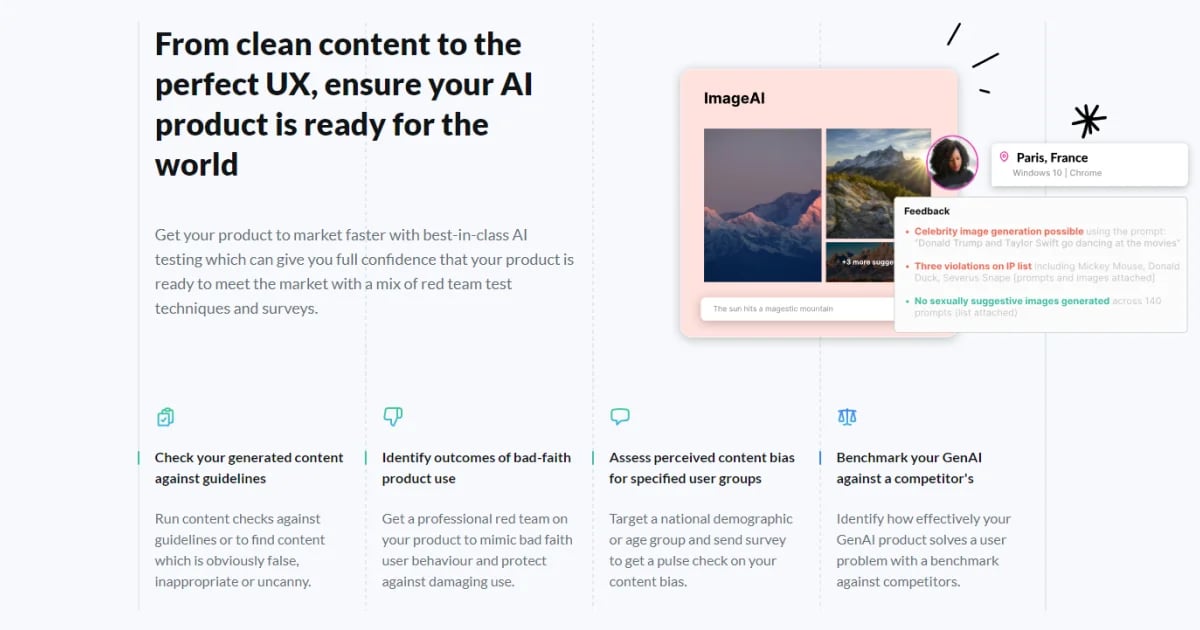
- Regression testing: Ensures consistent performance across updates to maintain application integrity.
- Exploratory testing: Provides results with videos and logs to expedite issue resolution and enhance application reliability.
- Performance testing: Measures system response times, resource usage, throughput, and other metrics
- Payment testings: Ensure flawless checkouts and transfers with Global App Testing's authentic, human-driven approach using real identity documents and devices.

- Compatibility testing: Guarantees smooth performance across various devices, browsers, and platforms, ensuring a consistent user experience.
Sign up now and schedule a call with our team today to explore how GAT can help you develop your app!
We can help you drive iOS and Android testing as a key initiative aligned to your business goals
Keep learning
10 Best performance testing tools
Android app beta testing - definitive guide
6 iOS testing frameworks to use

